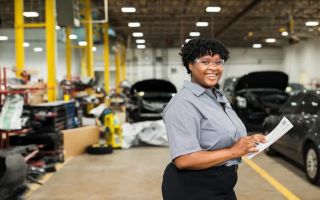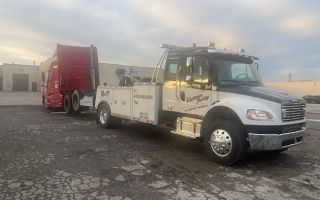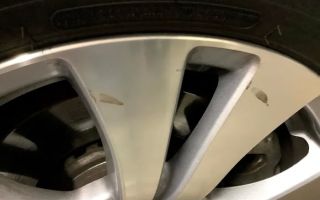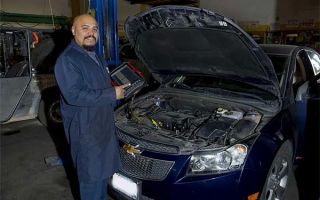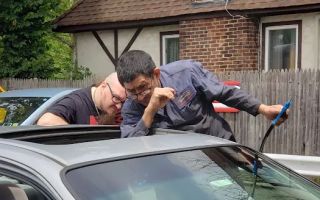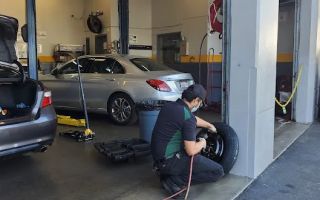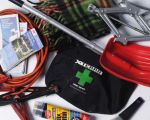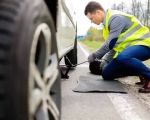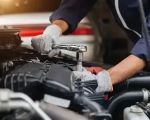Introduction to Car Troubleshooting
When your car breaks down or starts showing signs of trouble, it's easy to feel overwhelmed. Whether it's a strange noise, a warning light, or a performance issue, the thought of visiting a mechanic can be daunting. However, many car problems can be diagnosed and even fixed by yourself with the right knowledge and tools. This guide will walk you through common car problems and how to troubleshoot them at home, saving you time and money.

Pick Your Part - Help Yourself
1232 Blinn Ave, Wilmington, CA 90744, USA
1. Start with the Basics: Common Car Issues
Before diving into troubleshooting, it’s important to understand that many car issues fall into common categories. Here are a few things you should check first when diagnosing car problems:
- Battery issues: A dead battery is one of the most common causes of car problems. If your car is having trouble starting or the lights are dimming, the battery might need to be replaced.
- Brakes: If you notice a grinding noise, vibration, or difficulty stopping, your brake pads or rotors may be worn out.
- Engine light: The "check engine" light could indicate anything from a loose gas cap to a more serious engine issue. Using an OBD2 scanner can help pinpoint the problem.
- Overheating: If your car’s temperature gauge is rising or the engine is smoking, it could be a coolant issue, and you may need to check for leaks or low fluid levels.
2. Diagnosing Car Problems: Tools You’ll Need
To get started, there are a few essential tools every car owner should have in their toolkit. These tools will help you troubleshoot various issues:
- OBD2 Scanner: This tool connects to your car’s diagnostic port and helps you read error codes, which can provide insights into engine problems.
- Multimeter: A multimeter is useful for checking electrical issues, like faulty alternators or batteries.
- Basic mechanic’s toolkit: Screwdrivers, wrenches, pliers, and sockets are essential for fixing loose components and replacing parts.
- Jack and jack stands: If you're working under your car, a safe way to lift the car is essential. A hydraulic jack and jack stands will allow you to perform many tasks underneath the car.
3. How to Diagnose a Dead Battery
A dead battery is one of the most common issues car owners face. Here’s a simple way to troubleshoot it:
- Check for loose connections: Ensure the battery terminals are clean and tightly connected. Loose connections can prevent your car from starting.
- Test the voltage: Use a multimeter to check the battery’s voltage. A healthy battery should read around 12.6 volts. If it’s lower than 12 volts, your battery may need to be replaced.
- Try jump-starting the car: If your car still won’t start, try jump-starting it with another vehicle. If it starts, the issue is likely with the battery or the alternator.
4. Troubleshooting the Check Engine Light
The “check engine” light can signal a wide range of issues, from minor to severe. Here’s how you can troubleshoot it:
- Use an OBD2 scanner: The first step in troubleshooting the check engine light is to read the trouble codes with an OBD2 scanner. This device will tell you what specific issue is triggering the light.
- Look for obvious issues: Check for loose or damaged hoses, particularly around the intake manifold and air filter. Ensure your gas cap is tight—sometimes a loose cap can trigger the check engine light.
- Evaluate the codes: Some codes point to simple issues, like a misfire, which can be fixed by replacing spark plugs. More serious codes could point to engine or transmission problems, which may require professional assistance.
5. Common Brake Problems and Fixes
If you’re hearing strange noises or feeling vibrations while braking, it could be time to check your brake system. Here’s how to troubleshoot:
- Check the brake pads: Worn-out brake pads can cause squeaking or grinding noises. If they’re worn down, they need to be replaced.
- Inspect the brake rotors: If you hear a deep grinding noise, the rotors may be worn and need resurfacing or replacing.
- Bleed the brakes: Air in the brake lines can cause the brake pedal to feel spongy. Bleeding the brakes will remove air and restore the system’s effectiveness.
6. Addressing Overheating Issues
Overheating is a serious issue that can cause significant engine damage. If your car starts to overheat, follow these steps to troubleshoot:
- Check the coolant level: Low coolant levels are a common cause of overheating. Check the coolant reservoir and refill it if necessary.
- Inspect for leaks: Leaking hoses, radiator caps, or water pumps can cause coolant to leak out. Look for puddles under the car or stains near the engine.
- Check the radiator fan: The radiator fan should turn on when the engine gets hot. If it doesn’t, the fan motor or temperature sensor could be faulty.
Conclusion: When to Seek Professional Help
While troubleshooting car problems on your own is a rewarding and cost-effective way to manage car issues, some problems are complex and require the expertise of a professional mechanic. If you encounter an issue that seems beyond your skill set or tools, don’t hesitate to consult a professional. Regular car maintenance and timely repairs will ensure your car runs smoothly and safely for years to come.

